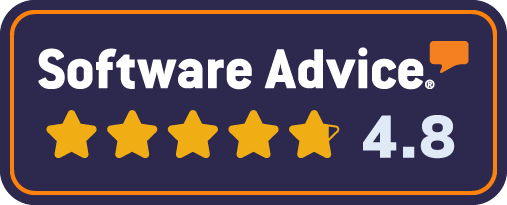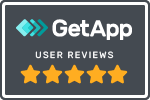During these unprecedented and worrisome times, purchasing online insurance leads is a surefire way to get in front of motivated prospects. But to truly capitalize upon these market trends, insurance agents and brokers must overcome abysmal conversion rates while standing out from their competition and sifting an unfiltered lead pond – or else risk wasting all time and money.
All this is possible through employing proven conversion solutions.
Drumming up insurance leads can be done in a variety of ways; social media advertising, events, and even referrals are all options. However, one of the easiest ways to get leads is to just buy them. We all know of different types of list brokers and online sources that sell entire databases worth of lead information.
But the issue with purchasing insurance leads is always about quality. Anyone can put a massive list of names and contact information into a spreadsheet. However, if none of them are in the market for the insurance you’re selling, then it’s just a sunk cost. The integrity of the lead data and demographic information varies wildly, with no assurance of legitimacy. More than 40% of marketing experts say that poor lead quality is their biggest barrier to successful lead generation.
The ideal situation is when you can get high-quality insurance leads and get them cheaply. To do that requires some strategy and planning, so let’s look at the most effective ways to invest your time and money when it comes to purchasing leads.
Insurance Leads Can Cost a Lot, with Little in Return
Purchasing leads within the Insurance industry is a pricey endeavor. Shared insurance leads, as you’re aware, come at a minimal cost – anywhere from $10 -$18 per lead and scaling up from there with customizable filters. However, the tradeoff for this low barrier of entry is each respective lead is being sold to multiple insurance agents. At scale, you’re sinking a significant amount of money just for the chance to compete for an insurance lead – needless to say these leads come with zero quality guaranteed. Alternatively, an insurance agent can go the route of purchasing exclusive insurance leads, which removes this competitive factor at a steeper price – anywhere from $20-$50 per lead. So, before you know if they’ll prove to be of any value, you have to make a sizable investment.
Given that your ‘exclusive lead’ still possesses the prerogative to call 10 other agents and could have already submitted another quote – even these lead types come with little guarantee.
“The Leads are Weak”
“Cold calling, using life insurance lead lists, or using Internet leads and then doing a sales pitch over the phone just doesn’t cut it anymore” – Jeremy Nason, Think Advisor
The sentiment above is not entirely off base, especially in regards to simply cold calling. The problem with this line of thinking, however, is that it’s too one-dimensional in it’s dismissal of buying online leads. It’s reductive and misleading. While lead source certainly plays a factor, the return on any lead would be severely impacted by spammy, outdated, and impersonal contact methods. Plus, as mentioned earlier, purchasing leads is both easy and quick – so why rob yourself of the opportunity to corner the market while demand is on a rise?
Instead of foregoing a channel/tactic altogether, why not improve it by maximizing the benefits and mitigating the shortcomings? Focus on the best and filter out the rest.
Talk to a Verse Lead Conversion Specialist to see how we can help
Getting More from Online Insurance Leads
Consistent success with online insurance leads is typically achieved through the following:
- Requirements: Be specific about what you’re looking for and only purchase from vendors who can deliver according to your specs. Integrity of your lists can save you a lot of money, along with the headache of sifting through leads that are clearly fake/bogus. Though this is not always possible, at minimum you shouldn’t settle for anything less than consistent formatting, along with clear demographic and geographic information. Demographic info, along with the following engagement tactics, can help centralize your focus on the big fish.
- Process: Simply put – you need a conversion solution that will handle all aspects of engagement for you. Most of us can attest to instances of getting leads and never following up. Of course, the leads you don’t follow up on will be worthless to you. This especially rings true if you’re purchasing those leads.However, it’s a global pandemic. Your workforce, more than likely, has been drastically affected. Their time comes at a premium – now, more so than ever. So you can’t afford to squander that resource by tasking your team with half-assed follow up that will realistically achieve little results. You need something authentic, efficient, and consistent.Additionally, a solution like Verse.io handles the engagement for you and provides you with insights and lead data from all of our conversations with your prospects. By seamlessly integrating into your CRMs, Verse.io gives you the chance to optimize all of those purchased lists and focus the demographic of your future purchases.
- Nurturing: Remember that leads all by themselves don’t really do much. If you nurture those leads through effective marketing efforts, you then can turn them into actual business opportunities over time. Part of doing this ensures you’re constantly focused on converting. If you aren’t, then your competitors are. Hubspot estimates that 74% of those who work with online leads believe that converting those leads into customers is their top business priority. (Wait. What’s this? Verse.io also provides long-term nurture? Wow. #ShamelessPlug)
Diversifying Your Lead Generation
Organic activity can deliver a lot of insurances leads (some say as much as 51% of your leads), while the cost of purchasing leads will likely result in smaller numbers. Yet, keep in mind that small businesses tend to fare the best when it comes to buying leads. Hubspot suggests that smaller businesses (those with $250,000 or less in annual revenue) can be very successful with approximately 100 quality leads per month. Larger businesses require a lot more leads and a lot more activity to get those leads. And, ultimately, it’s the quality of those leads that is most important.
There are endless ways to drum up business, and as we’ve seen here, online insurance leads can be an effective way to do that. The key is to be specific and focused about how you structure your lead buying, and then ensure you are implementing the right methods to guarantee a significant ROI.
Don’t miss out on your chance to drive more business. If you’re generating your insurance leads, hire a service, like Verse.io, to handle your engagement and improve your conversion rates.


